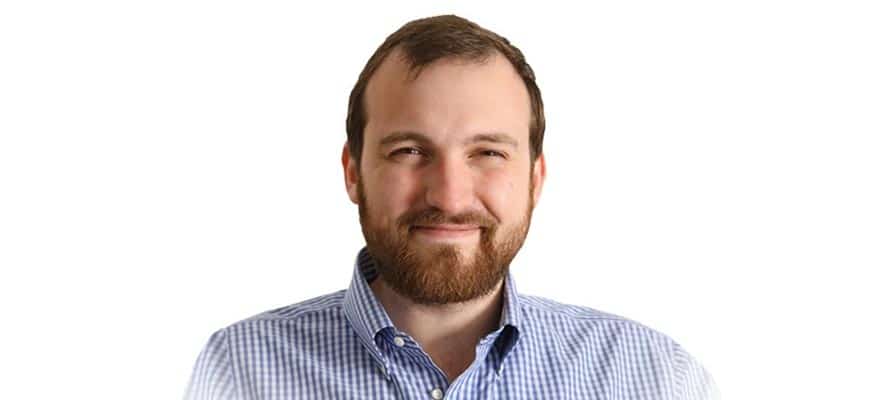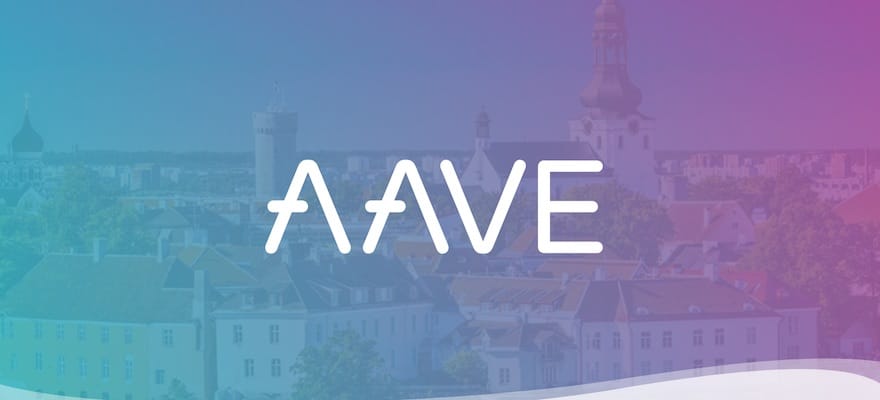In the months following the Blockchain boom at the end of 2017, money and hype were being poured onto new cryptocurrency networks and platforms. Coins were like sports teams--people followed them, supported them, and cheered them on as new features were added to them and more users adopted them.
Now, more than a year later, many of these coins have all but disappeared. Those that are still actively working toward achieving the big goals that they set for themselves last year seem to be the exception, not the rule. One cryptocurrency that’s still chugging along the path to widespread use and adoption is Cardano, a cryptocurrency co-founded by Charles Hoskinson.
When we spoke to Hoskinson a year ago, he spoke quickly and bombastically about the things that Cardano was working to achieve. “In a year, [Cardano will be] fully decentralized, we have smart contracts,” he said. “We [will] have all those things you know and love, like lots of Liquidity , multisig paper wallets, hardware wallets support, delegation where it needs to be,” he said.
“We’ll also be able to–pound-for-pound–compete with Ethereum and Bitcoin,” he added.
Recently, Finance Magnates' Danielle Tichner spoke with Charles Hoskinson once again at the Token 2049 event in Hong Kong. This time around, Hoskinson was far more relaxed. Cardano hasn’t achieved everything that he said that it would a year ago. Nevertheless, he is determined that the network is moving along the right path.
”We Try to Go After a Really Big Goal”
So why isn’t Cardano fully decentralized yet? “It’s useful to take a step back and kind of realize how the Cardano project got started and the aspirations of it,” Hoskinson began. “We look at Cardano kind of like a DARPA [Defense Advanced Research Projects Agency] project. If you look at a lot of the great things that we have on the internet--Siri [for example] started as a project called CALO, ‘Cognitive Assistant that Learns and Organizes.’”
“Basically, the idea is that you want to have the freedom to do high-risk, high-return research. We try to go after a really big goal, and actually we had three collections of big goals,” he explained.
“One, we wanted to create truly scalable protocols; two, we wanted to really understand the science of interoperability and figure out how to get blockchains to talk to each other; and three we wanted a way to figure out a more sustainable way of governing these systems so [that] the ‘who pays’ and the ‘who decides’ side of the space so that we don’t have the Ethereum Classics and the Bitcoin Cashes... whatever the latest flavor [of altcoin] is.”
The latest Cardano Community newsletter is out! Check it out on the Cardano Forum here: https://t.co/YTdkzPoUlQ or better yet, subscribe to it here: https://t.co/H40Jf2JjrU ! #CardanoCommunity
— Cardano Foundation (@CardanoStiftung) March 15, 2019
“So the first step was to build a big collection of academics so we brought a lot of scientists, we wrote a lot of papers--over 40 papers so far, [20 of which] have gone through peer review of major conferences.”
“Then, to translate that research into [actually coding] a production system. So when you go from aspirational to actual execution, it’s always an exact science. You have deadlines and schedules, and really you can break it down into a collection of five things that get accomplished.”
“One is [that] we needed a centralized system to fully blow out what we’ve done with Ouroborous; two, we needed to introduce a smart contracts system; three, we need to get all the interoperability protocols that we’ve designed into the ledger; four, we need to have scalability protocols put in, and then, finally, we need to have the governance protocols put in.”
”We Just Didn’t Get There”
“So, our hope was to get decentralization done last year,” he explained. “We just didn’t get there. We tried really hard, but we had a lot of regressions and we had parallel teams working, and some of the teams weren’t working out, so we had to consolidate, and we had to pivot on a few things.
“So, that’s okay, that’s inevitable,” he said. “It delayed us by about a year. But we’re speeding up, and we’re now in a position where at the end of this month, we’re gonna launch a Shelley test net, and we’re also gonna launch the first major Shelley update, which is Ouroborous-BFT (Byzantine Fault Tolerance) to the mainnet. So, these two things basically form the backbone of the systematic step-by-step strategy to get decentralization out.”
“So what’s gonna happen is that the test net will allow us to accumulate lots of stake pools, and then what we can do is roll over that test net into the mainnet and then flip a switch.” Hoskinson explained that the transition will happen gradually, ‘epic’ by ‘epic’, “so that every five days, the system gets more decentralized, and then you wake up a few months later and a hundred percent of the system is being run by stake pools.”
Better Safe than Sorry: The Case for Gradual Decentralization
Hoskinson said that this gradual process of decentralization is useful in case something goes wrong. “You can look at metrics to decentralize, so what you can do is say, ‘hey, if all the blocks here are being made by the stake pools and the network quality is right and the chain quality is right, they continue decentralizing. If for whatever reason they’re not running the protocol, then regress back to the Ouroborous-BFT.”
“So you have a back flow,” he said. “You can go in one direction or the other...if the protocol looks correct, then the system becomes fully decentralized. If there’s some flaws--things aren’t working right--then you go back to a safe operating space. I think it’s a very sensible way of gradually introducing decentralization into a system...it’s something that can be accomplished in weeks and months, and you can see constant progress.”
Cardano Probably Won’t Reach More than 200 Transactions Per Second this Year
“In terms of scalability, Ouroborous as a collection of protocols on the thread side is nearly done. We have two more papers that we’re gonna write, and there’s some refinements to the Genesis paper that we’re going to be pushing out this week or next… and then some enhancements to Ouroborous to increase its resistance against temporary periods of dishonest majority.”
“Once those things are done, Ouroborous is, at this point, a finished product, meaning that you could run--forever--a Bitcoin-style syste or an Ethereum-style system with it at a reasonable TPS [transactions per second]--somewhere in the 100-200 TPS range.” he said. “If that’s your cup of tea, the system will run indefinitely.”
Cardano Foundation will be one of the founding members of the International Association for Trusted Blockchain Applications (INATBA). This association is an exciting milestone for blockchain adoption as it will work on frameworks for Europe. Read more: https://t.co/gTx2JrJStl
— Cardano Foundation (@CardanoStiftung) March 14, 2019
“So, the next step is to shard it, and we’ve already begun our sharing research. We’ve published a paper called Parallel Chains--Matthias Fitzi out of Switzerland did that, and there’s a whole family of papers that we’re gonna start writing along that line.”
Eventually, this research will accumulate into a final protocol that we call Ouroborous Hydra. “Those papers will start being pushed to market for peer review towards the second half of this year, and then we anticipate implementing them in the first half of 2020.”
Hoskinson continued to explain that “after we’ve got done with decentralization, smart contracts, and interoperability, there really isn’t a need to go beyond, let’s say, 100 to 200 transactions per second in 2019.
“We’re probably not gonna have that kind of adoption,” he said. “I mean, that would basically be saying that we have more transactions that Bitcoin and Ethereum combined, so it’s probably not gonna happen in 2019. But we do [eventually] need to get to a higher rate--like, 3000-5000 TPS to be comparable with Visa scale networks and these things. Hydra will get us there.”
Cardano's Presence in Africa is Growing
Hoskinson also said that since his last conversation with Finance Magnates, Cardano has made “great progress” in its bid to become the “financial stack of the developing world.”
Last time we spoke, Hoskinson said that Cardano’s goal was “to be used throughout Africa, and the Caribbean, and South America, and to run in parallel with the financial system of the developing world, and eventually consume it, and transform it from the outside.”
What does the future of the industry look like? Where are things headed? These are the questions Charles Hoskinson answered in his keynote speech at Token2049 today! #token2049 #asiacryptoweek #Cardano pic.twitter.com/uNbmw9j7My
— Cardano Foundation (@CardanoStiftung) March 14, 2019
“We have an Addis Ababa, Ethiopia,” he said. “We just finished a class where we’re training 23 women to become Haskell developers--19 from Ethiopia, 4 from Uganda...so, we’re getting pilots and we’re really starting to push enterprise blockchain into Africa. We view enterprise blockchain as an onramp to adoption into Cardano.”
“So, we have a great strategy to [achieve] representation in 25 countries in Africa by the end of this year and all 52 countries by [2020]... Basically, the name of the game is there to show up, train a bunch of people, get some pilots, and then go do something in agriculture or business registration or property registration, [to make] real products that are of real use to people.”
“The output of that is digital identities, wallets, addresses that are interoperable with Cardano’s, so then we can use Cardano for lending and insurance. So that vision hasn’t changed,” he said.

















